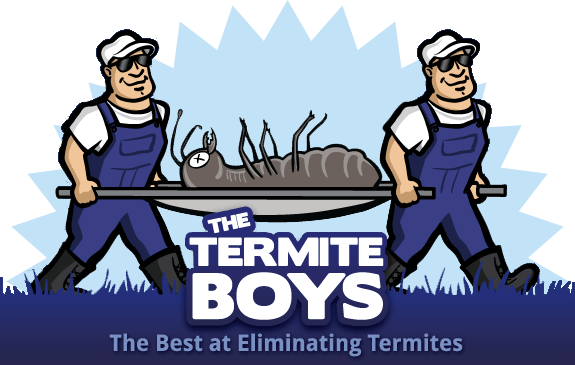Termites are more than just tiny insects. They’re silent destroyers, capable of damaging homes, buildings, and structures from within before you even notice a problem. For residents in Massachusetts, understanding termites, their behavior, and how to manage them is an essential part of homeownership. This blog dives deep into everything you need to know about termites in Massachusetts, including how to identify them, the damage they can cause, prevention tips, and what to do if you suspect an infestation.
Whether you’re a homeowner concerned about potential damage, or just curious about these elusive insects, you’ll find all the information you need to protect your property right here.
Understanding Termites and Their Presence in Massachusetts
Termites thrive in warm and humid conditions. While Massachusetts experiences cold winters, the state still provides the conditions needed for certain termite species to survive and thrive. The most common type found in the region is the eastern subterranean termite. These termites are notorious for their ability to destroy wooden structures, disrupting the integrity of homes and other buildings.
What Are Subterranean Termites?
Subterranean termites are social insects that live underground in colonies. These colonies can house hundreds of thousands of termites. Termites build intricate mud tubes to access food sources like wood and plant materials, which makes them hard to spot at first.
Why Are These Termites Found in Massachusetts?
Subterranean termites prefer moist soil and decaying wood to establish their colonies. During the humid summer months or periods of heavy rainfall, conditions in Massachusetts offer an ideal environment for these pests to grow and expand.
Signs of a Termite Infestation
Spotting termites early can save you from costly repairs. Keep an eye out for these common signs of a termite infestation:
- Mud Tubes
Termites build pencil-sized mud tunnels along walls, foundations, and other vertical surfaces to travel to their food source.
- Discarded Wings
After swarming during the mating season, termites shed their wings. You may find these near windowsills, doors, or other entry points.
- Hollow Wood Sounds
If your wooden furniture or flooring sounds hollow when tapped, termites might be chewing away inside.
- Frass (Termite Droppings)
Drywood termites, in particular, leave small, sand-like pellets (frass) near wooden surfaces they’ve been feeding on.
- Swarmers
During warmer months, winged termites, known as swarmers, may gather in large numbers to find a mate and form a new colony.
The Damage Termites Can Cause
Termites in Massachusetts are capable of extensive structural damage. Here’s a closer look at the types of destruction they can cause to your property:
- Weakened Foundations: Subterranean termites often feed on houses’ foundational wooden beams and support structures, potentially leading to collapsing floors or wall instability.
- Damaged Furniture: Termites don’t just stop at structural wood; they can ruin cabinets, shelves, and wooden furniture, leaving them fragile and unusable.
- Expensive Repairs: Damage from termites often requires extensive repairs, which might not be covered by typical homeowners’ insurance policies.
How to Prevent Termite Infestations
The best way to protect your home from termites is through proactive prevention strategies. Take the following steps to safeguard your property:
Maintain Your Home’s Exterior
- Ensure proper drainage to prevent water accumulation near foundations.
- Repair roof leaks or broken gutters to eliminate excess moisture.
- Fix any cracks or gaps in your foundation or walls as they can serve as entry points for termites.
Remove Excess Wood and Moisture
- Keep firewood, tree stumps, and wooden debris away from your home.
- Regularly inspect and replace rotting wooden fences, decks, or siding.
- Ensure proper ventilation in crawl spaces and basements to minimize humidity.
Conduct Regular Inspections
- Schedule annual termite inspections with a licensed pest control professional.
- Look out for any early signs of termites highlighted above and take action immediately.
Use Termite Barriers and Treatments
- During construction, install termite barriers or apply pre-construction anti-termite treatment.
- Utilize specially formulated soil treatments to create a protective barrier around your home.
What to Do If You Suspect Termites
If you’ve identified the warning signs of termites, act quickly to minimize further damage. Here’s what you should do:
- Call a Professional
Engage a certified pest control specialist who can inspect your home thoroughly and confirm the presence of termites.
- Treatment Options
Depending on the infestation severity, professionals may use baiting systems, liquid termiticides, or fumigation to eliminate the pests.
- Assess the Damage
Hire a contractor to evaluate the extent of the structural damage so you can address necessary repairs once the termites are eradicated.
- Follow Up
Even after treatment, stay vigilant for its success. Schedule follow-up inspections to ensure that the infestation is fully resolved.
Why Professional Help Matters
DIY approaches to handling termite infestations can often fall short, leaving your home vulnerable. Pest control experts use advanced tools and techniques to locate and eliminate the pests entirely. By working with licensed professionals, you gain peace of mind, knowing that the problem is being addressed effectively.
Building a Termite-Free Future
Termites in Massachusetts might be silent destroyers, but with knowledge, vigilance, and preventative measures, you can keep them from damaging your home. Routine maintenance, yearly inspections, and quick action can make all the difference in protecting your property from these invasive pests.
If you suspect termite activity or want to ensure your home remains pest-free year-round, reach out to a pest control professional near you to schedule an inspection today. Don’t wait until it’s too late!

